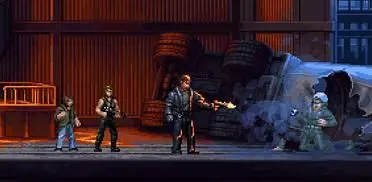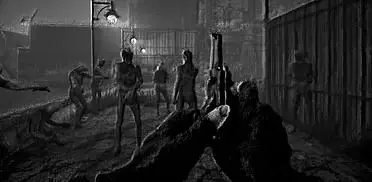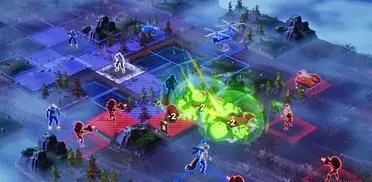2012 is set to be a landmark year for games, with titles from near enough every genre being represented by AAA releases. While the extreme sports arena has been disappointing as of late, with even gaming stalwarts Tony Hawk struggling to find an audience, all eyes are on EA and their snowboarding game SSX making it to the 360 and PS3 for the first time. With anticipation running at an all time high for what could be the ultimate snowboarding game, what better time than the present to look back on the history of the series and see exactly why gamers across the world are so excited for SSX in 2012.
It’s easy to forget that the original SSX was a launch game for the PS2 in 2000. Alongside some early favourites like Timesplitters and Tekken Tag Tournement, SSX was the unknown quantity, and surprised most of the gaming community. The arcade slant that was compared to the PS1 series Cool Boarders made SSX an easy entry point for those who weren’t familiar with the sport, but the depth hidden underneath was what gave EA Canada the makings of a brilliant franchise. Billed as a racing game, where tricks were merely used as a way to build up power for speed boosts, the developers were as surprised by how the players reacted as the public was to the technology on show. SSX felt like the next generation, both in the environments and overall graphical style, but it was so much more than simply a race to the finish. Tricks were over the top and pushing your boarder to the edge as you ‘pre-wind’ your jumps (Flips and spins had to be performed before you left the ground as such) was a shock to the system and natural all at the same time.
After seeing the way that players were playing their game, and wanting to capitalise on being one of the most critically acclaimed names in the new generation, EA released a sequel, SSX Tricky just a year later. As the name suggests, the emphasis was shifted from racing to freestyle events where scoring points for pulling off ridiculous tricks was first priority. The addition of Uber moves, boost enabled tricks that are used to spell out the word ‘tricky’ on the boost bar, allowed for a much more tactical decision whether to aim for speed or tricks, as the prize for spelling the whole word was unlimited boost for a short time. The risk reward aspect of SSX Tricky, alongside the now iconic set of boarders to choose from was what made it an essential purchase.
That said, the biggest complaint with Tricky, especially by those playing on PS2 and not one of the ‘new’ platforms for the series, was that it recycled most of its tracks from the original. More like an upgrade, Tricky may have only featured 2 new tracks but as a refinement of a winning formula it worked well. A true sequel would need to push the series in a whole new direction to be a success, and SSX3 lived up to the pressure on release in 2003.
Both previous games took players across the world to ‘real’ mountains to race down, whereas SSX3 features one mountain range with 3 separate peaks. While this meant that you could still select events from a list, the main attraction was to board between events on the continuous mountain. Specialist ‘Freeride’ back country sections have you racing against the elements as avalanches and harsh weather conditions allow for some of the craziest riding lines the series has ever seen.
Uber Tricks returned in an upgraded form, with level two Uber manoeuvres being the most ridiculous seen in just about any extreme sports game yet. With tricks like Superman and Katana living up to the name, and certain combinations of flips, spins and uber tricks giving out huge point boosts as Monster Tricks, it added yet another way to score big. Just about everything in SSX3, including the innovative online features, was like EA maxing out the capabilities of what was possible on the current consoles, the perfect formulation of what it takes to master the extreme sports genre. SSX3 was revered by critics and fans across the world, but as with any mountain peak the only way was down.
SSX On Tour was everything that SSX3 wasn’t, formulaic, predictable, and it felt overly serious and forced. Throw in the worst decision EA ever made with the series, the addition of Skiers, and On Tour was a huge disappointment. It was still SSX, and with excellent tricks, music and tracks, the game was still received relatively well by critics. But when compared to the heights of the previous game, it felt like a step backwards. The lack of Online was attributed to a focus on the single player, but this only made SSX3 even more relevant despite a sequel available. EA had to take it back to the drawing board once more if they were to reclaim commercial success again.
Two years later, EA took the series in a new direction, with not quite sequel SSX Blur. Exclusive to Wii, it utilised motion controls to perform tricks and for steering your boarder. It wasn’t perfect, but was an enjoyable way of experiencing the series. Newcomers were in for a shock though, with Uber tricks activated through massively complicated motions making this the most difficult SSX yet. With the Wii library at the time being underwhelming at best, Blur was one of the first essential titles for hardcore gamers. That said, it still felt like SSX lite, without most of what had made SSX3 so essential 4 years previous.
Cut to 2012 and we are just a month away from the true follow up to the best snowboarding game ever made. With expectations running at an all time high, the pressure is on for EA to deliver the definitive extreme sports game. By bringing the series back to its roots, while ramping up online functionality, SSX has the chance to be one of the year’s best games. It looks brilliant in HD, the series finally arriving on PS3 and 360, and the stellar soundtrack announced so far looks like it stays true to everything fans are looking for from an SSX game.
A series that defined the previous generation for a lot of players, SSX may well become one of the stand out games of this generation. We’re sure to find out when the game arrived in March.







